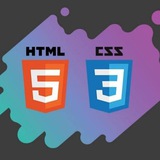3. <head>
The <head> tag starts the header section of your file. The stuff that goes in here doesn't appear on your webpage. Instead, it contains metadata for search engines, and info for your browser.
The <head> tag starts the header section of your file. The stuff that goes in here doesn't appear on your webpage. Instead, it contains metadata for search engines, and info for your browser.
5. <meta>
Like the title tag, metadata is put in the header area of your page. Metadata is primarily used by search engines, and is information about what's on your page. There are a number of different meta fields, but these are some of the most commonly used:
description---A basic description of your page.keywords---A selection of keywords applicable to your page.author---The author of your page.viewport---A tag for ensuring that your page looks good on all devices.
Like the title tag, metadata is put in the header area of your page. Metadata is primarily used by search engines, and is information about what's on your page. There are a number of different meta fields, but these are some of the most commonly used:
description---A basic description of your page.keywords---A selection of keywords applicable to your page.author---The author of your page.viewport---A tag for ensuring that your page looks good on all devices.
7. <h1>
The <h1> tag defines a level-one header on your page. This will usually be the title, and there will ideally only be one on each page.
<h2> defines level-two headers such as section headers, <h3> level-three sub-headers, and so on, down to <h6>. As an example, the names of the tags in this article are level-two headers.
The <h1> tag defines a level-one header on your page. This will usually be the title, and there will ideally only be one on each page.
<h2> defines level-two headers such as section headers, <h3> level-three sub-headers, and so on, down to <h6>. As an example, the names of the tags in this article are level-two headers.
10. <strong>
This tag defines important text. In general, that means it will be bold. However, it's possible to use CSS to make <strong> text display differently.
However, you can safely use <strong> to bold text.
This tag defines important text. In general, that means it will be bold. However, it's possible to use CSS to make <strong> text display differently.
However, you can safely use <strong> to bold text.
12. <a>
The <a>, or anchor, tag lets you create links. A simple link looks like this:👇
The <a>, or anchor, tag lets you create links. A simple link looks like this:👇
